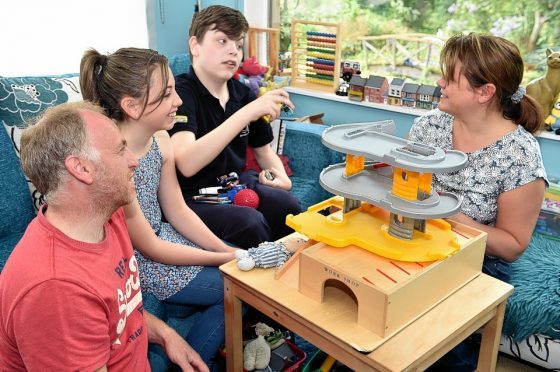A leading disability campaigner has claimed an “unprecedented” number of parents will educate their children from home next term, as Moray Council rolls out plans to slash classroom support posts.
Chairman of the Moray branch of the National Autistic Society, Glyn Morris, believes that withdrawing one-to-one support from pupils who have become accustomed to it will leave some parents with little option but to remove them from school.
Mr Morris’s son Gregor, who is now 17, received individual supervision throughout his years at primary school as he has autism and epilepsy.
Mr Morris said that, if his son had lost that support, he would have home-schooled the youngster amid fears for his safety.
That is a decision he claims many Moray parents are now considering.
Mr Morris said: “Without one-to-one support in the classroom we simply would have had to teach Gregor at home.
“Gregor has very little awareness of danger, and there is no way he would have been able to cope without someone closely monitoring him.
“When children with anxiety issues feel under pressure, their instinct can be to take flight and that is worrying because they could do a runner from the school grounds.”
He added: “We could be looking at children being home-schooled on an unprecedented level in Moray.”
Mr Morris said he also feared that the number of children excluded from school could escalate if certain pupils lost individual supervision.
Details of Moray Council’s plans to refine its approach to teaching additional support needs (ASN) children began to emerge a fortnight ago.
Outraged parents have since banded together to combat the proposal, which will see hours and posts cut across several primary schools.
Despite the outcry against the plan, Moray Council’s children and young people’s services committee approved it by 11 votes to four last week.
Last night, a local authority spokesman insisted that all ASN pupils would continue to receive “appropriate support”.
He added: “It remains the responsibility of individual schools to determine the level of support to meet the needs of each pupil as an individual.
“In some cases that will remain as one-to-one support, but some support may be in groups where that is considered most appropriate in terms of meeting the needs of pupils.”
